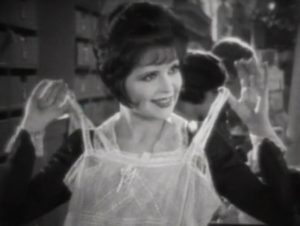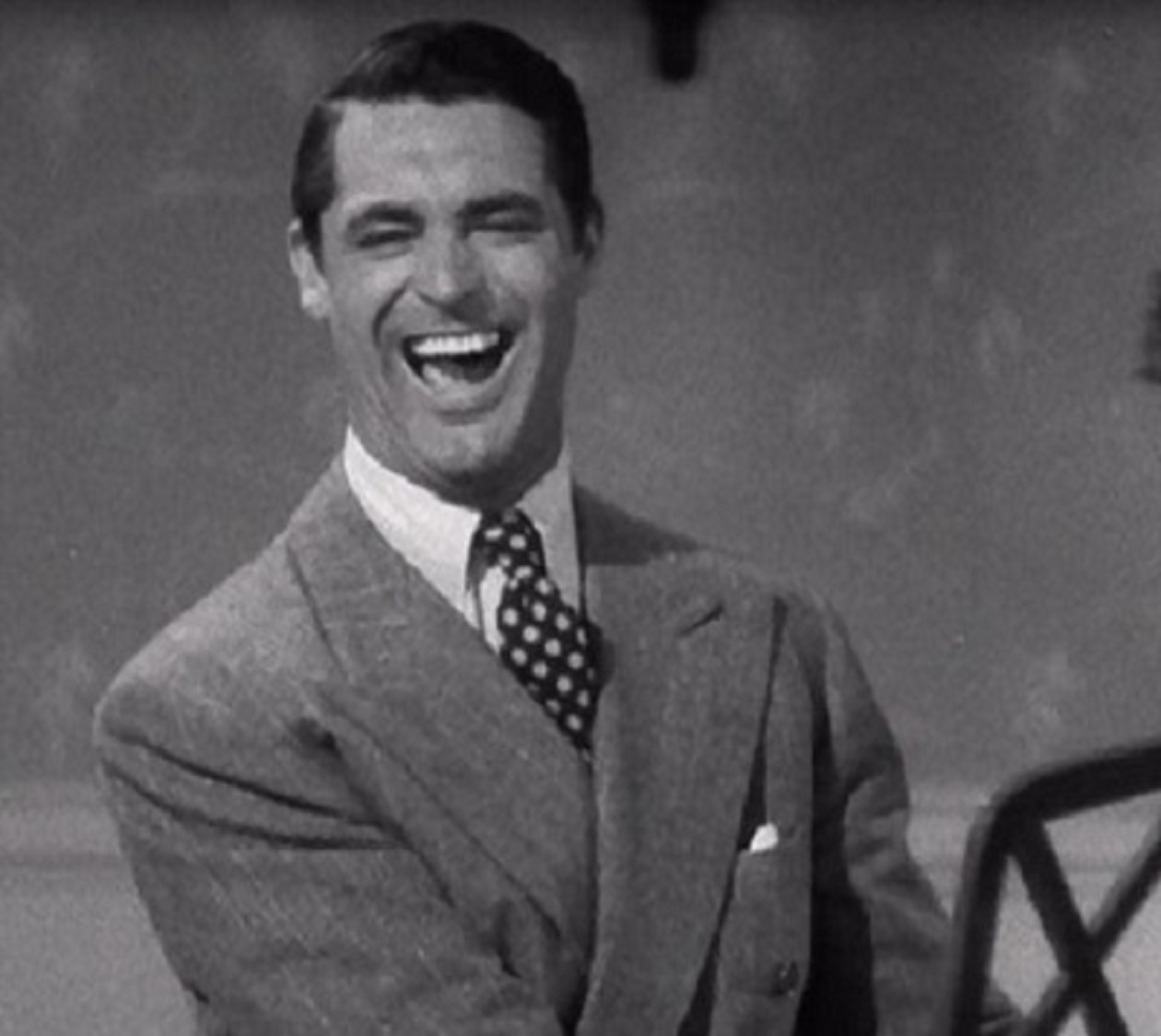
I recently caught It at a theater with live music, and am still buzzing from it. I liked the film before. With live music, it was a revelation. The talented composer, Jeff Rapsis, used the term “moving picture” rather than film to discuss silents. This term and my exposure to multimedia this year have me thinking: Could silents reach otherwise classic movie-averse folks like my sister?
Could Silents Silence Typical Classic Film Objections?
Resistance to classic film, especially black and whites, comes in the form of comparison: The production values are better now. The acting is better now. Directors have learned from their predecessors, so why go back? We classic film enthusiasts may scoff at these claims, offering as Exhibit A Michael Bay, but the fact remains that the films of the 30s-50s and today are considered similar enough to be directly compared. Yet silent film is a different art form than the movies we know, with different restrictions, different demands. We can no more compare the two than we could stage and television productions.
My mother has been studying art, and keeps referring to the departure from representational art once photography advanced. Movies took the opposite route: moving from figurative (silent) to representational (today). There are exceptions, of course–Terrence Malick comes to mind. But just as we can’t compare Vermeer to Picasso, we can’t go point for point with Metropolis and Star Wars. Avoiding comparisons is crucial since we’re all guilty of using the worst example from the opponent’s camp (i.e., Bay), and the best from our own. With no comparisons, with fewer best-of lists, perhaps there can be less quickness to judgment.
Could Instagram Pave the Way to Silents?
For a culture obsessed with Instagram, silents seem a natural. Incredible concision? Check. A story delivered with visuals rather than sound/many words? Check. Silent film directors didn’t have the luxury of lengthy speeches; they had to distill emotion to a few gestures, drama to a few actions. What could be more compelling to our tweet-obsessed, quick-pic world? And as for our love for cat videos, also sans words, could a Buster Keaton action shot resemble a cat video more? The silliness, the athleticism, the grace–all without special effects? His DNA was clearly more feline than human.
Will Our Media-Savvy Youth Prove Less Resistant to Classics?
This year my students produced radio and visual essays for a creative nonfiction class. They were nervous about unfamiliar technology, just as we older folks are. But they were never resistant to other art forms, as we can be. When I showed them silent film sequences, they didn’t complain. They took ideas from them. When a guest speaker demonstrated his digital memoir, which included silent film clips, they expressed admiration. One student started adding black and white footage to his profile. Another used images of classic film stars primping and mooning to illustrate her preparations for a date. And lest you think they were budding film directors, I should point out that most were science majors.
Perhaps this flexibility bodes well for classic movie fans. When I entered the theater to watch It, I noticed an older audience, as expected. But back in the corner was a line of twenty-somethings, looking vaguely hipsterish and far too serious. Afterward, they were grinning, just like I was. Is it silly of me, to find this hopeful?
Of course, anyone watching a silent with live music would more fully appreciate the art form as it was meant to be experienced. (For those of you with sisters like mine, who rant about classic film sucking, see if you can find a silent with a composer. My husband, who dragged me to Transformers 2, agreed to a romantic comedy once he heard the details.)
But even in a room, on the computer screen, perhaps a silent can reach our resistant friends if a 30s or 40s masterpiece does not. It’s worth a try.
*For anyone interested, my bet with Rachel is ongoing. She’s using her new job, home, and move as excuses for the delay in her fulfillment of the deal. I will keep you posted on developments.

What a thoughtful post!
You made a good point that young people may be more open to silent films. My mom won’t watch a silent for nothing in this world, but more than once I heard about children and teens loving silent comedies. Loving silents is an acquired taste, so there is hope!
Cheers!
Le
Thank you! When I was a kid, a pizza place (Noble Romans) played silents. I remember being fascinated, as were the other kids there. Maybe when you’re closer to the age you had to communicate without speech, silents are more natural to you. So maybe we just have to hook em early:)
To me, the biggest hurdle regarding silent film is the “language” of the medium. You have to watch a silent in an entirely different manner, particularly with a drama. Comedies starring the likes of Harold Lloyd or Colleen Moore are a different animal, thanks to their respective gags and vivacity.
It’s true. We have to be patient in figuring it out. But don’t we do that all the time? We don’t read a website as we do a book, or a text as we do a letter. I am hoping this versatility we’re developing is helping us! (But it may be wishful thinking:))
I think you’re onto something.
I attend many silent film screenings in Toronto. The audience is quite mixed from families to hipsters, and the crowds get bigger all the time.
Thank you for sharing this! I love knowing that the fan base is growing:) I am jealous you have so many you can attend! I suppose I should be grateful there are any I can go to, living as far from a big city as I do.